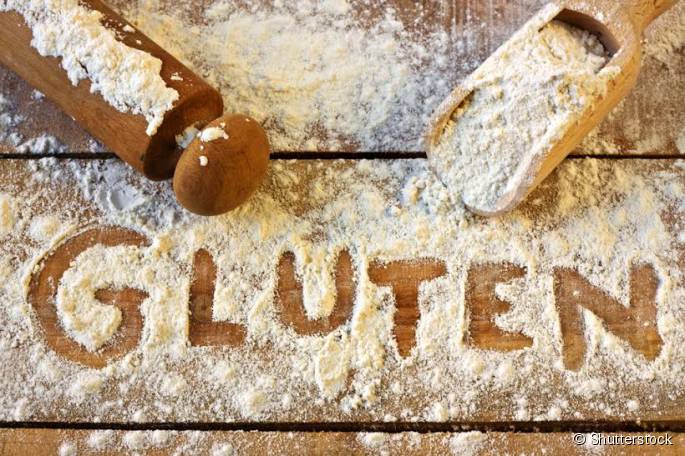What is Glútem? All You Need To Know
Gluten, a protein present in wheat, barley, and rye, plays a crucial role in providing elasticity and texture to dough, making it a fundamental component in various baked goods. Nevertheless, for certain individuals, the ingestion of gluten can result in adverse reactions, leading to conditions such as gluten intolerance or celiac disease.
The recent surge in the prevalence of gluten-free diets and products has prompted questions about the nature of gluten and the reasons behind its avoidance. This article delves into the fundamentals of gluten and examines its implications for our health.
Table of Contents
What is Gluten?
Found in wheat, barley, and rye, gluten is a protein comprising two key components: gliadin and glutenin. These proteins are integral to the elasticity and texture of dough, contributing to the chewiness and fluffiness of bread and other baked goods.
Beyond its role in baking, gluten serves as a frequently employed binding agent in various processed foods, including sauces, dressings, and soups. Surprisingly, gluten is also present in products like beer, soy sauce, and certain medications, highlighting its widespread use across different consumer goods.
What is Gluten Intolerance?
Gluten intolerance, also identified as celiac disease, manifests as a condition where the body reacts negatively to gluten consumption. Individuals with celiac disease experience an immune system response that targets the small intestine, resulting in damage to the lining and hindering nutrient absorption.
Symptoms of gluten intolerance exhibit variation among individuals, but prevalent signs encompass bloating, diarrhea, constipation, abdominal pain, and fatigue. If untreated, celiac disease can escalate to severe health complications, including malnutrition, anemia, and an elevated risk of specific types of cancer. Seeking timely intervention is crucial to mitigate these potential repercussions.
Gluten-Free Diets
With the increasing prevalence of celiac disease and gluten intolerance, numerous individuals have adopted gluten-free diets as a means of managing symptoms and enhancing their overall well-being. This dietary approach entails abstaining from all gluten-containing foods, including wheat, barley, and rye.
While a gluten-free diet is essential for individuals with celiac disease, it has also gained popularity as a trend among those aiming to lose weight or boost their general health. Nevertheless, it’s crucial to emphasize that there is no scientific evidence supporting the assertion that a gluten-free diet provides health benefits for individuals without celiac disease or gluten intolerance. Decisions regarding dietary choices should be made based on individual health needs and consultation with healthcare professionals.
Gluten-Free Products
The growing demand for gluten-free products has resulted in an expanded array of options. Many grocery stores now feature dedicated sections for gluten-free items, and the market offers numerous brands and products catering to this need.
Among the popular gluten-free choices are bread, pasta, bagels, and donuts. It’s crucial to recognize that a gluten-free label doesn’t automatically signify a healthy choice. Several gluten-free products undergo extensive processing and may include added sugars and unhealthy fats. It’s advisable for consumers to remain mindful of the overall nutritional content of gluten-free options and make informed choices based on their dietary preferences and health goals.
Gluten-Free Options Near Me
For those adhering to a gluten-free diet, the quest for suitable options in your vicinity may arise. Numerous restaurants now cater to this dietary preference by providing gluten-free menus or incorporating gluten-free choices. Additionally, exploring local gluten-free bakeries or specialty stores can yield a variety of alternatives.
Another avenue is the option of preparing gluten-free meals and baked goods in the comfort of your home. Online platforms offer a wealth of gluten-free recipes, and with a bit of practice, you can craft flavorful and nutritious gluten-free dishes in your own kitchen.
Gluten-Free vs. Wheat-Free
It’s crucial to distinguish between gluten-free and wheat-free, as they are not synonymous. Although wheat is a prevalent gluten source, other grains like barley and rye also contain gluten. Opting for a wheat-free diet does not necessarily eliminate all sources of gluten, as it may still include gluten from other grains. Conversely, a gluten-free diet entails the complete exclusion of all gluten sources, providing a more comprehensive approach to dietary restrictions.
How to Know if a Product is Gluten-Free
During grocery shopping, meticulous label reading is essential to identify gluten-free products. Seek items explicitly marked as gluten-free or certified by organizations like the Gluten-Free Certification Organization (GFCO).
Additionally, keep an eye out for ingredients frequently employed as gluten substitutes, including almond flour, coconut flour, and tapioca starch. Nevertheless, it’s advisable to verify the label to confirm the product’s genuine gluten-free status. Being vigilant about ingredients ensures a reliable approach to gluten-free choices.
Gluten-Free Substitutes
For those adhering to a gluten-free diet, the question of replacing gluten-containing ingredients in beloved recipes may arise. Fortunately, various gluten-free substitutes are at your disposal, including almond flour, coconut flour, and gluten-free all-purpose flour blends.
In addition to these alternatives, gluten-free grains like quinoa, rice, and oats can be used as substitutes for their wheat-based counterparts. However, it is crucial to ensure that any oats utilized are certified gluten-free, as there is a potential risk of cross-contamination with gluten during processing. Verifying the gluten-free certification guarantees the suitability of these ingredients in your gluten-free culinary endeavors.
Gluten-Free Recipes
If you’re in search of delectable gluten-free recipes to experiment with in your kitchen, here are a few suggestions to kickstart your culinary endeavors:
1. Gluten-Free Bagels: Crafted from almond flour, these bagels offer a quick and easy breakfast option.
2. Gluten-Free Pizza: Indulge your pizza cravings with this crust, skillfully crafted from a blend of gluten-free flours.
3. Gluten-Free Donuts: Opt for a healthier alternative to traditional donuts with this recipe, featuring coconut flour for a delightful treat.
In Conclusion
Gluten, a protein present in wheat, barley, and rye, can trigger adverse reactions in individuals with celiac disease or gluten intolerance. While imperative for those with these conditions, there is no scientific evidence substantiating the purported benefits of a gluten-free diet for individuals without gluten intolerance.
For those on a gluten-free diet, meticulous label reading and a focus on certified gluten-free products are crucial. Additionally, don’t hesitate to explore creative avenues in the kitchen, experimenting with gluten-free substitutes and recipes. With some effort, you can relish the pleasures of delicious and nutritious gluten-free meals and baked goods.






